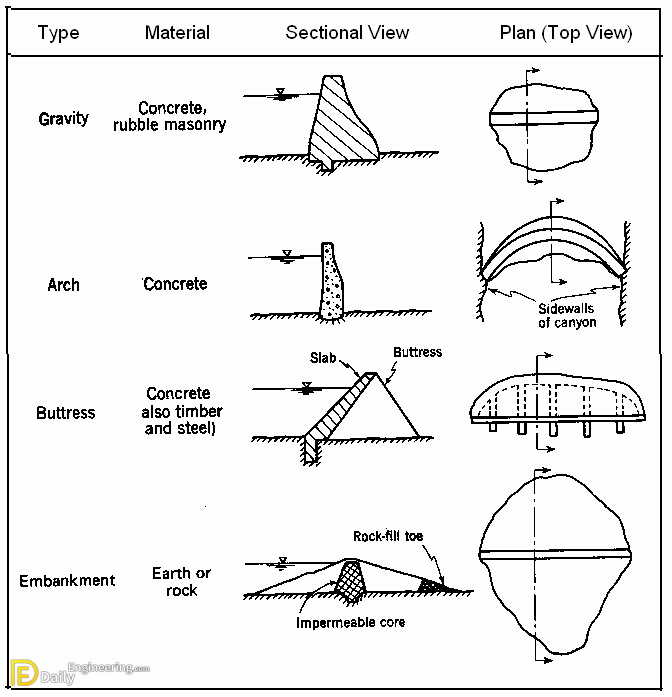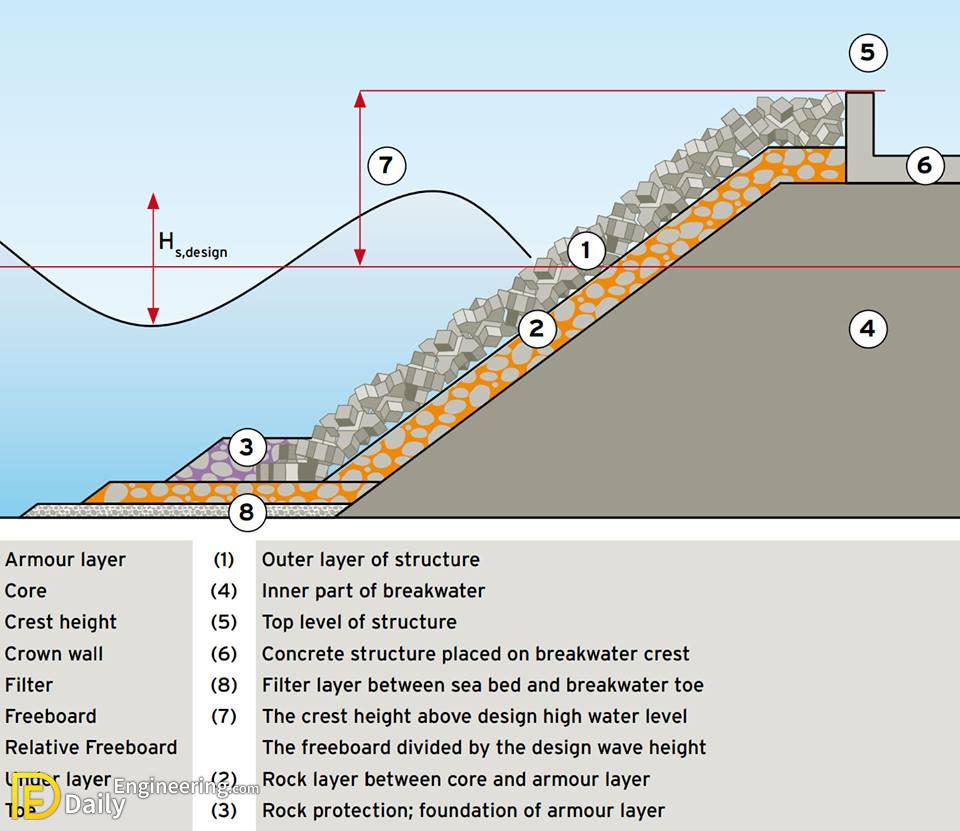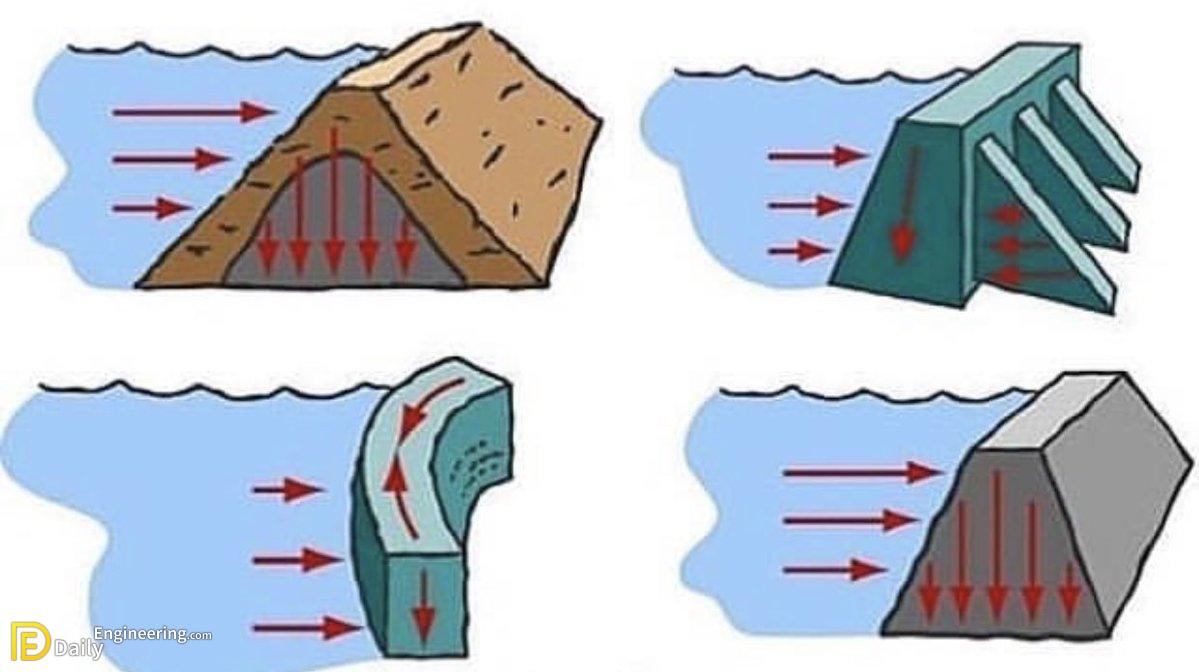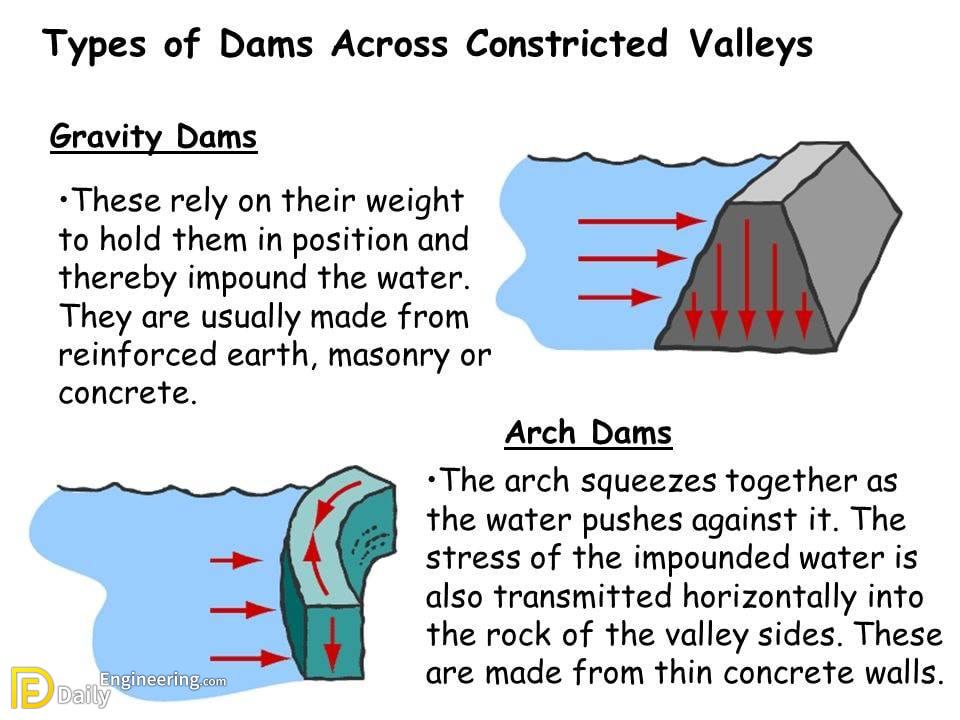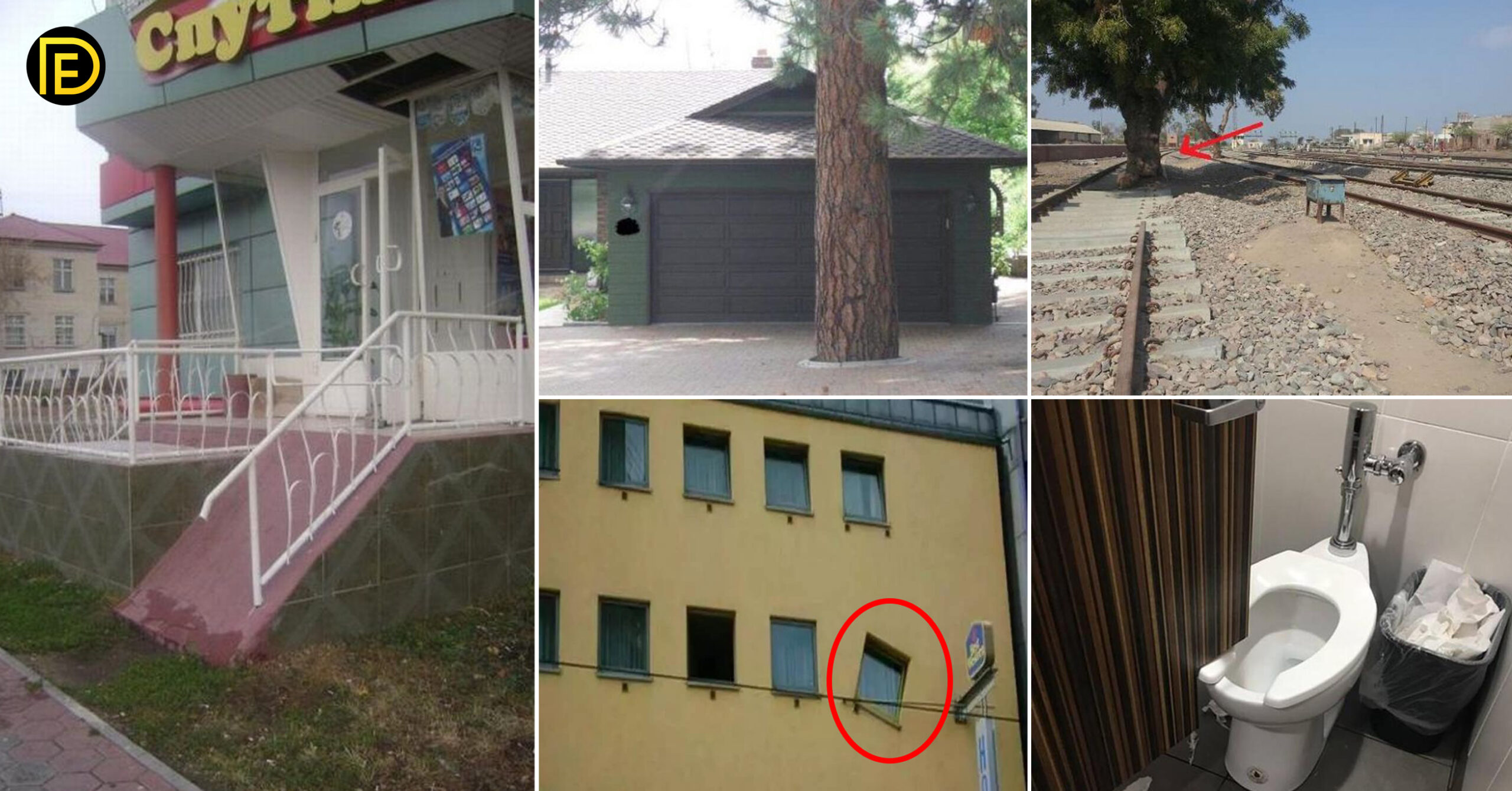Dams are massive barriers built across rivers and streams to confine and utilize the flow of water for human purposes such as irrigation and the generation of hydroelectricity. This confinement of water creates lakes or reservoirs.
Classification Based on Structure and Design of a Dam
1- Arch Dam

Arch dams are made from concrete. They are curved in the shape of an arch, with the top of the arch pointing back into the water. An arch is a strong shape for resisting the pushing force of the water behind the dam. Arch dams are usually constructed in narrow, steep-sided valleys. They need good rock for their foundations, and for the sides of the valleys, to resist the forces on the dam.
2- Buttress Dam

Buttress dams are made from concrete or masonry. They have a watertight upstream side supported by triangular-shaped walls, called buttresses. The buttresses are spaced at intervals on the downstream side. They resist the force of the reservoir water trying to push the dam over. The buttress dam was developed from the idea of the gravity dam, except that it uses a lot less material due to the clear spaces between the buttresses. Like gravity dams, they are suited to both narrow and wide valleys, and they must be constructed on sound rock.
3- Gravity Dam

A gravity dam is made from concrete or masonry, or sometimes both. It is called a gravity dam because gravity holds it down to the ground stopping the water in the reservoir from pushing it over. A cross-section (or slice) through a gravity dam will usually look roughly triangular. Gravity dams are suited to sites with either wide or narrow valleys, but they do need to be built on sound rock.
4- Embankment Dam
Embankment dams are made mainly from natural materials. The two main types are earth-fill dams and rockfill dams. Earthfall dams are made up mostly of compacted earth, while rockfill dams are made up mainly from dumped and compacted rockfill. The materials are usually excavated or quarried from nearby sites, preferably within the reservoir basin. A cross-section (or slice) through an embankment dam shows that it is shaped like a bank or hill. Most embankment dams have a central section, called the core, made from an impermeable material to stop water from passing through the dam. Clayey soils, concrete or asphaltic concrete can be used for the core. Rockfill dams are permeable. They can have a core or an impermeable cover on the upstream face. Materials used for the cover include reinforced concrete and asphaltic concrete.

Classification Based on Functions of a Dam
1- Storage Dam
They are constructed to store water during the rainy season when there is a large flow in the river.
2- Diversion Dam
A diversion dam is constructed for the purpose of diverting water from the river into an off-taking canal (or a conduit).
3- Detention Dam
Detention dams are constructed for flood control. A detention dam retards the flow in the river on its downstream during floods by storing some flood water.
4- Debris Dam
A debris dam is constructed to retain debris such as sand, gravel, and driftwood flowing in the river with water.
5- Coffer Dam
A temporary structure enclosing all or part of the construction area so that construction can proceed in the dry. A diversion cofferdam diverts a stream into a pipe, channel, tunnel, or another watercourse.
6- Hydropower Dam
A dam that uses the difference in water level between the reservoir pool elevation and the tailwater elevation to turn a turbine to generate electricity.
Classification Based on Construction Material used for a Dam
A- Rigid dam
1- Masonry Dam
Masonry dams are built using either stone masonry or brick masonry. Cement mortar is used to join the masonry blocks. Gravity dams, arch dams, etc. are examples of masonry dams.
2- Concrete Dam
Concrete is the most commonly used material to construct a dam. Most of the major dams in the world are built using concrete. Gravity dams, arch dams, Buttress dams, etc. can be constructed using concrete.
3- Timber Dam
Timber dams are generally used for temporary purposes such as diverting the water for the construction of the main dam, controlling floodwater flow, etc. Timber dams are suitable for up to 9 meters in height.
4- Steel Dam
Steel dams are also used for temporary requirements like timber dams. Steel plates and inclined struts are used for the construction of steel dams. This type of dam is suitable for up to 15 to 18 meters in height.
B- Non-Rigid Dam
1- Earthen Dam
Earthen dams are made of ordinary soil which is cheaply available. This type of dam is suitable where the foundation soil is very weak and not strong enough to carry the weight of the masonry dam. Since it is constructed using soil the cost of construction is very less compared to rigid type dam.
2- Rock Fill Dam
Rockfill dams are constructed using rocks and boulders. The upstream side of the dam is built with dry rubble masonry and a loose rockfill is provided on the downstream side. A reinforced concrete slab layer is also provided on the upstream side to make it water-tight. It is more stable than earthen dams and its flexible nature helps it better against earthquake forces.
Classification Based on Hydraulic Design of Dam
1- Overflow Dam
An overflow dam is a dam that allows the water over its crest when surplus water is flowing on the upstream side. This is also called a spillway dam or overfall dam.
2- Non-Overflow Dam
A dam that does not allow the surplus water to overflow over its crest. But in general, a spillway is provided for any type of dam to release the excess water from the upstream side.
Click Here To See How Many Forces Acting On A Dam Structure And Calculations?







